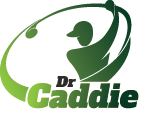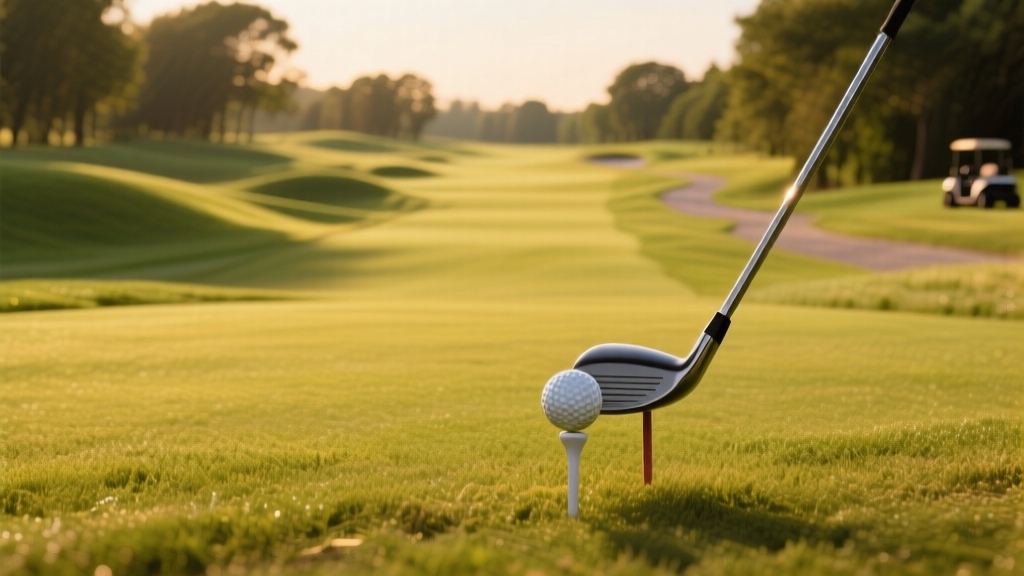A good drive in golf for most recreational players ranges between 200 and 225 yards. This is solid for building consistency and improving your game. If you’re below a 6 handicap, you might approach 240 yards, while pros often drive 300 yards or more.
Age, skill, and technique all impact your distance, but focusing on accurate contact and optimizing your swing can boost your length. Keep exploring to uncover tips for driving even farther.
- Key Takeaways
- Average Driving Distances for Recreational Golfers
- Driving Distance Benchmarks for Professional Golfers
- How Age Affects Your Driving Distance?
- The Role of Handicap in Driving Distance
- Common Misconceptions About Driving Distance
- Key Factors That Influence Driving Distance
- Understanding the Difference Between Distance and Accuracy
- Tips for Improving Your Driving Distance
- Frequently Asked Questions
- Maximize Every Shot — Shop Drivers Engineered for Distance and Control
Key Takeaways
- A good drive for recreational male golfers typically ranges between 200 and 224 yards, aligning with USGA and R&A normal distance classifications.
- Professional golfers average drives around 300 yards, with top players exceeding 320 yards consistently on tour.
- Lower handicap golfers tend to drive farther, often nearing 240-245 yards, compared to higher handicaps averaging under 190 yards.
- Driving distance naturally declines with age but can be maintained or improved through better technique, fitness, and equipment.
- Achieving a good drive depends on solid contact, optimized swing speed, proper equipment, and consistent shot execution.
Average Driving Distances for Recreational Golfers
When you look at recreational golfers, their average driving distances vary widely depending on skill level and other factors.
For male amateurs, the overall average sits around 215 yards. Those holding handicaps from 13 to 20 typically drive about 200 yards. Proper course maintenance, including effective divot repair, helps maintain consistent playing conditions that can influence driving performance.
If your handicap is below 6, you’re likely hitting just shy of 240 yards. Female golfers average roughly 176 to 178 yards, with those between 13 and 20 handicaps driving closer to 155 yards. Most recreational players fall between 200 and 224 yards, and only around 29% exceed 250 yards. This range of distances is considered within normal ranges according to findings from the USGA and R&A report.
Driving Distance Benchmarks for Professional Golfers
While recreational golfers typically drive between 200 and 224 yards, professional golfers consistently push those numbers much higher. They set benchmarks that challenge the limits of power and precision.
On the PGA Tour, average driving distances hover around 299 to 301 yards. Top players like Aldrich Potgieter reach an astonishing 327.4 yards. To maintain peak performance, professionals often ensure their grips are dry and clean using effective drying methods.
Elite hitters such as Rory McIlroy and Bryson DeChambeau regularly exceed 320 yards, showcasing exceptional strength and technique. These professionals rely heavily on drivers, using them on about 70-74% of driving holes to maximize distance.
Equipment advances and physical conditioning continue to boost these numbers, pushing the sport’s boundaries. The tour average recently surpassed 300 yards for the first time, highlighting a new era of driving power tour average. Knowing these benchmarks helps you appreciate the skill and athleticism required to compete at the highest level of golf.
How Age Affects Your Driving Distance?
As you get older, you might find that your driving distance starts to drop a bit, especially once you hit your 50s. It’s something many people experience, but don’t worry too much about it!
Your skill level actually has a huge impact on how much distance you can still manage. In fact, golfers with a lower handicap tend to hit longer, more accurate shots, which helps maintain driving distance despite age.
In fact, you’ll see that well-conditioned players can still outperform younger golfers who mightn’t have the same level of skill. Golfers in their 30s tend to achieve the longest average drives, highlighting the peak performance age group.
So, if you focus on improving your technique and staying fit, you can really help curb that distance loss. It’s all about keeping your driving game strong, no matter your age!
Distance Declines With Age
Even though aging is inevitable, you can better understand how it affects your driving distance and adjust your game accordingly. As you grow older, your swing speed and distance naturally decline. For example, amateurs in their 20s average around 237 yards, but by their 50s, this drops to about 216 yards. Keeping track of your performance with a scorecard can help monitor these changes effectively.
Professionals experience similar trends, losing roughly 7% distance from their prime into their 50s. The gap between PGA Tour averages of around 316.6 yards and Champions Tour averages near 294.5 yards clearly highlights this age-related distance loss.
Here’s what to keep in mind:
- Driving distance decreases gradually from your 30s, accelerating after 50.
- Swing speed closely ties to your driving distance, both diminishing with age.
- Modern clubs and fitness can help slow this decline, though distance loss is normal.
Knowing this helps you set realistic expectations and refine your strategy.
Skill Mitigates Distance Loss
Understanding that aging naturally reduces swing speed and driving distance, you can still maintain impressive yardage by sharpening your skills. Wearing one glove can improve grip and provide additional hand support, contributing to better swing consistency.
Improving swing mechanics, physical conditioning, and course management helps you offset power loss. Equipment upgrades and mental confidence further boost your driving performance. Studies show that after age 60, golfers typically experience a 7% decrease in driving distance, emphasizing the importance of skill and strategy.
| Factor | Benefit | How It Helps |
|---|---|---|
| Swing Technique | Maximizes clubhead speed | Efficient power transfer |
| Physical Fitness | Maintains flexibility and strength | Supports swing speed and control |
| Mental Approach | Boosts confidence and shot choice | Encourages aggressive, smart drives |
| Equipment Advances | Improves ball speed and launch | Compensates for slower swing |
| Experience | Enhances shot placement | Optimizes effective driving distance |
The Role of Handicap in Driving Distance
Your handicap really influences how far you can drive the ball, and it’s a clear indicator of your skill level on the course. This is because your handicap reflects your overall playing ability and is used to adjust your scores in competition, highlighting performance differences.
As you work on your game and lower your handicap, you’ll probably notice that your driving distance starts to improve too. It’s pretty interesting how these two factors are linked, right? In fact, scratch golfers tend to drive significantly further than higher-handicap players regardless of age, which highlights the importance of skill in maximizing driving distance.
Understanding your gross score and how it relates to your handicap can help you track these improvements more effectively. By understanding this connection, you can pinpoint areas to focus on. This way, you can boost not just your distance but your overall performance on the course.
Handicap and Distance
A golfer’s handicap plays a crucial role in determining driving distance, with lower handicappers consistently hitting the ball farther than higher ones. Your skill level impacts your average drive more than age does, with scratch golfers averaging around 245 yards compared to 187 yards for 30-handicap players.
Understanding how the stroke index influences handicap strokes can help you better allocate your efforts on challenging holes. As you improve, your driving distance gains become more significant, especially dropping below a 10 handicap.
Here are key points to contemplate:
- Each 1-yard increase in driving distance typically lowers your handicap index by about 0.093.
- Most amateurs average 215 yards, but hitting beyond 220 yards usually means you’re approaching single-digit handicaps.
- Improving from a 10 to a 5 handicap can boost your driving distance by over 5%.
Focus on lowering your handicap to see real gains off the tee. Studies show that skill impacts distance approximately twice as much as age, underscoring the importance of improving your game rather than relying on youth alone.
Skill Level Correlation
While many factors influence your driving distance, your handicap level plays a pivotal role in how far you can consistently hit the ball. As your skill improves and your handicap lowers, you naturally gain distance off the tee.
For example, scratch golfers average nearly 245 yards, whereas a 20-handicap golfer hits around 200 yards. This gap reflects how refined technique and consistency boost power and control. However, it is important to note that distance alone does not determine handicap, as scoring is more influenced by swing consistency and overall shot quality.
| Handicap Range | Average Drive (yards) | Distance Difference (yards) |
|---|---|---|
| 0 (Scratch) | 245 | |
| 8–12 | 220 | -25 |
| 13–20 | 200 | -45 |
| 30 | 187 | -58 |
Tracking your handicap helps you set realistic distance goals and measure progress effectively.
Improving Distance Strategies
Because driving distance strongly correlates with handicap, improving your skill level directly enhances how far you can hit the ball.
Lower handicaps average drives around 241–245 yards, while high handicaps often struggle to reach 190 yards. There is typically a significant distance gap of over 60 yards between low handicap players and those with 30+ handicaps.
To boost your distance, focus on:
- Technique Refinement – Work on swing mechanics to generate more clubhead speed and solid contact. Using the proper grip size can significantly improve control and power in your swing.
- Physical Conditioning – Increase strength and flexibility to add power and maintain it as you age.
- Consistent Practice – Regularly train both driving accuracy and distance to lower your handicap and improve overall performance.
Common Misconceptions About Driving Distance
Although many golfers believe they know how far they drive, recreational players often overestimate their actual distances by a significant margin.
On average, male golfers drive around 225 yards, and female golfers about 178 yards, yet many imagine their drives are much longer. Selecting the proper golf grip size can also influence your consistency and control off the tee.
This gap can mislead your on-course decisions, causing you to choose clubs or shots based on false assumptions. Also, there’s no universal ideal driving distance you should hit. In fact, the average driver distance for a 15 handicap golfer is about 236 yards, reflecting varied skill levels and physical conditions.
Focusing on personalized, accurate club distances helps your strategy far more than chasing arbitrary numbers. Remember, even pros miss fairways regularly; distance isn’t the sole key to scoring well. Instead, understanding your true distances and tailoring your goals to your game will improve your performance and enjoyment on the course.
Key Factors That Influence Driving Distance

Understanding the key factors that influence your driving distance can transform how you approach each tee shot. To boost your drives, focus on these essentials:
- Clubhead Speed and Swing Mechanics: The faster you swing with proper technique, the more energy transfers to the ball. Improving your tempo and body coordination is vital. Recent analyses show that a 1 SD increase in driving distance (~4.5 yards) yields a performance gain similar to a 1 SD improvement in approach (~0.35 strokes), underlining the importance of efficient mechanics. Additionally, proper grip size can enhance swing mechanics by promoting a consistent swing path and reducing tension.
- Physical Fitness and Body Dynamics: Strength, flexibility, and balance enhance your rotational power, directly impacting how far you hit. Target golf-specific muscles to gain distance. Maintaining comfort and reducing hand fatigue through equipment choices like midsize grips can support sustained performance during long rounds.
- Equipment Technology and Fit: Using a driver tailored to your swing speed and style maximizes ball speed and launch conditions. Modern club and ball designs also help add yards. The growing importance of driving distance in recent years reflects how equipment advances and course design have increased the value of extra yards off the tee.
Mastering these factors will help you consistently drive farther and elevate your game.
Understanding the Difference Between Distance and Accuracy
When you step up to the tee, knowing how distance and accuracy differ can change how you plan your shot. Distance measures how far your ball travels, while accuracy reflects how often you hit the fairway. On professional tours, longer drives often come with a trade-off in precision, but both are essential for scoring well.
For example, courses like Augusta National tend to favor longer hitters, providing approximately a +0.19 stroke advantage per 10 yards of extra distance, highlighting the impact of course length advantage.
| Attribute | PGA Tour Average |
|---|---|
| Driving Distance | 287-289 yards |
| Driving Accuracy | 69-71% fairways hit |
| Distance vs Accuracy | Weak negative correlation |
| Impact on Score | Both important, varies by course |
| Recreational Bias | Overestimate distance 4-7% |
Understanding this balance helps you make smarter decisions and manage risks effectively.
Tips for Improving Your Driving Distance
If you want to add yards off the tee, focusing on both your equipment and technique is essential. Improving your driving distance isn’t just about swinging harder; it’s about swinging smarter and using gear tailored to your game.
Here are three tips to help you gain more distance:
- Optimize Your Equipment: Choose a driver with the right shaft flex and clubhead design. Modern technology can lower spin rates and increase ball speed, maximizing carry and roll. Many golfers benefit from custom fitting to find the optimal shaft length and loft for their swing.
- Increase Swing Speed: Work on building core strength and flexibility to generate more power efficiently without losing control.
- Refine Your Technique: Practice an optimized swing path and alignment to ensure solid contact and ideal launch conditions. Hitting the ball closer to the center of the clubface can significantly enhance distance by improving ball speed and launch consistency.
Frequently Asked Questions
How Does Altitude Affect Driving Distance in Golf?
Altitude boosts your driving distance by reducing air resistance, letting the ball fly farther. For every 1,000 feet you play above sea level, expect roughly a 2% to 10% increase in carry distance.
That means your drives can gain about 10 yards per 1,000 feet of elevation. To capitalize, adjust your club selection and shot planning since ignoring altitude can cause misjudged shots and missed greens.
What Is the Impact of Golf Ball Type on Driving Distance?
You can gain up to 40 yards more driving distance using premium golf balls compared to range balls. The ball type impacts your distance by influencing spin, compression, and aerodynamics.
Multi-layer balls offer a great balance of distance and control, while two-piece balls prioritize durability and distance but with less spin. Matching ball compression to your swing speed maximizes energy transfer, helping you drive farther and more accurately.
Can Weather Conditions Cause Significant Variations in Drive Length?
Yes, weather conditions can definitely cause noticeable changes in your drive length. Temperature plays the biggest role; warmer air is less dense, letting your ball fly about 2 yards farther for every 10°F increase.
Wind can either help or hurt your distance depending on direction and strength. Humidity’s effect is minimal, but rain and wet ground can reduce your drive by up to 15 yards. Always adjust your strategy accordingly.
How Do Different Tee Box Heights Influence Driving Distance?
Think of tee height as the launchpad for your golf ball’s journey. Different tee heights directly influence your driving distance by affecting your launch angle and spin rate. Higher tees let you strike the ball above center, boosting launch angle and reducing backspin.
This can add around 14 yards to your drive. Experiment with tee heights to match your swing and club. You’ll release smoother, longer drives with more consistency.
Does the Type of Grass on the Fairway Affect Drive Roll?
Yes, the type of grass on the fairway definitely affects your drive roll. Bentgrass offers a smoother, denser surface that encourages longer rolls, especially when kept short.
Bermudagrass, with its coarser texture, can slow your ball down and reduce roll distance. Zoysia’s thick blades may limit roll but help with solid contact.
Maximize Every Shot — Shop Drivers Engineered for Distance and Control
Remember, a good drive isn’t just about distance; it’s about consistency and control. Take Lisa, who improved her average from 180 to 210 yards by focusing on technique rather than just power.
As you work on your swing and understand how age, handicap, and factors like club choice influence your drive, you’ll see steady progress. Keep practicing smartly, and you’ll find your ideal driving distance that suits your game and boosts your confidence on the course.

